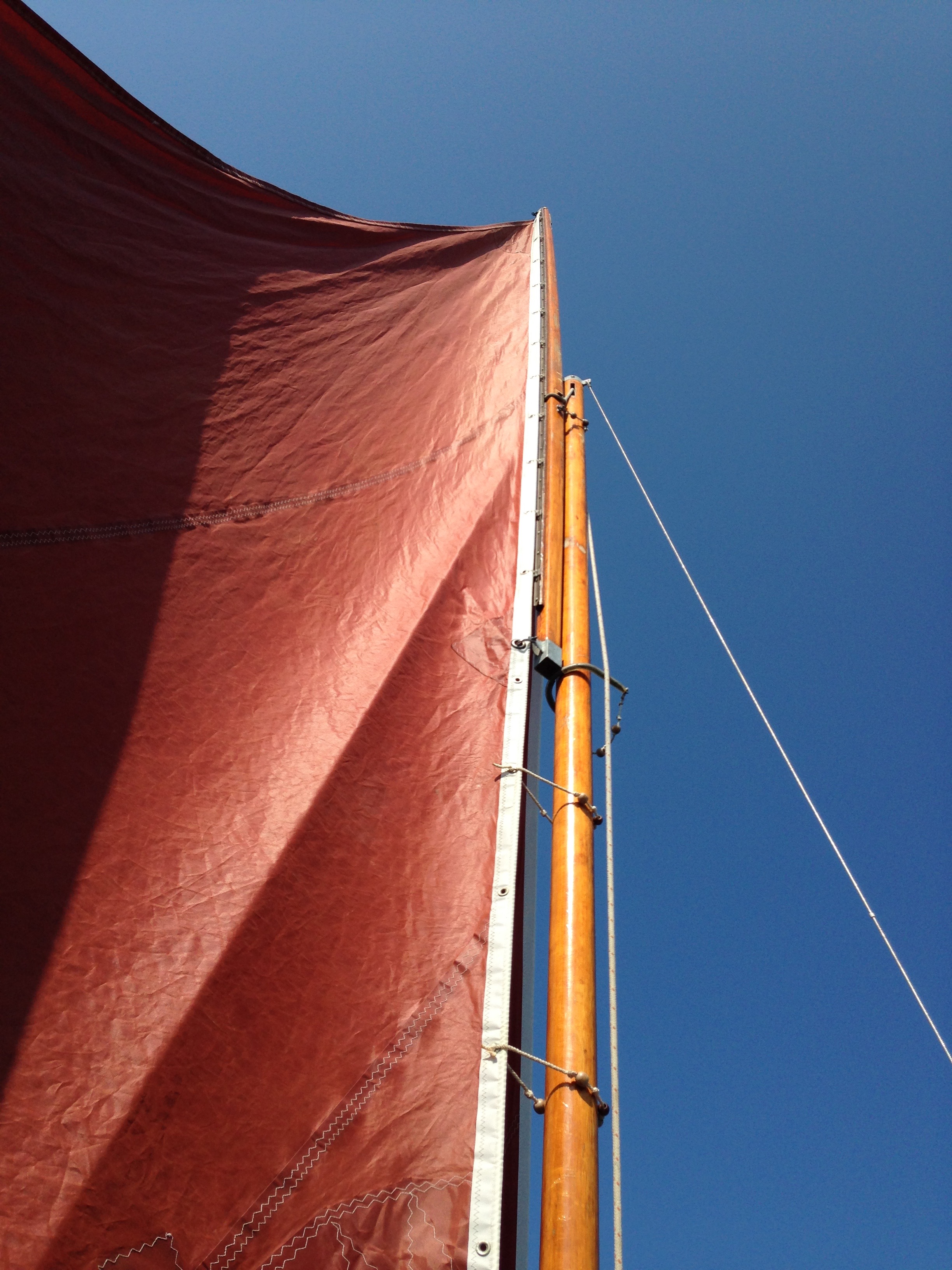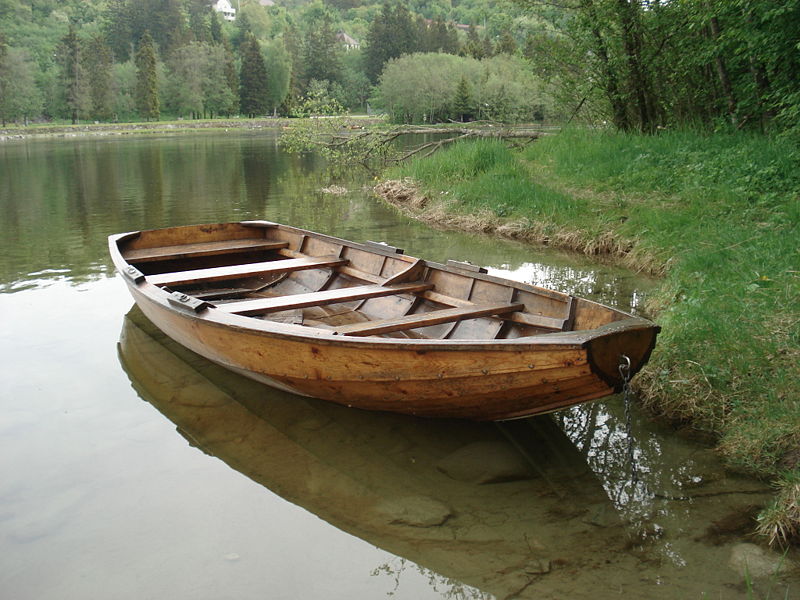|
Pelican (dinghy)
The Pelican is a pram dinghy, peculiar to Perth, Western Australia Design It is similar to the ubiquitous Mirror A mirror or looking glass is an object that Reflection (physics), reflects an image. Light that bounces off a mirror will show an image of whatever is in front of it, when focused through the lens of the eye or a camera. Mirrors reverse the ..., being a gunter-rigged pram designed for a crew of two. However, it's a little smaller and is usually rigged only with main and spinnaker. Originally constructed in timber, many are now constructed in fibreglass. A variant of the Pelican class sailed at Lake Maquarie is also rigged with a jib. Foils The rudder is made from wood or fibreglass. The daggerboard is made of aluminium improving its longevity and ease of maintenance. Sails In 2014 the class rules were updated to allow Polyester Laminate sails (Mylar). This and Dacron are the only materials allowed. The class evolved in the 1950s from the tenders o ... [...More Info...] [...Related Items...] OR: [Wikipedia] [Google] [Baidu] |
Dinghy
A dinghy is a type of small boat, often carried or towed by a larger vessel for use as a tender. Utility dinghies are usually rowboats or have an outboard motor. Some are rigged for sailing but they differ from sailing dinghies, which are designed first and foremost for sailing. A dinghy's main use is for transfers from larger boats, especially when the larger boat cannot dock at a suitably-sized port or marina. The term "dinghy towing" sometimes is used to refer to the practice of towing a car or other smaller vehicle behind a motorhome, by analogy to towing a dinghy behind a yacht. Etymology The term is a loanword from the Bengali ', Urdu ', and Hindi '. Types Dinghies usually range in length from about . Larger auxiliary vessels are generally called tenders, pinnaces or lifeboats. Folding and take-down multi-piece (nesting) dinghies are used where space is limited. Some newer dinghies have much greater buoyancy, giving them more carrying capacity than older ... [...More Info...] [...Related Items...] OR: [Wikipedia] [Google] [Baidu] |
Perth, Western Australia
Perth is the capital and largest city of the Australian state of Western Australia. It is the fourth most populous city in Australia and Oceania, with a population of 2.1 million (80% of the state) living in Greater Perth in 2020. Perth is part of the South West Land Division of Western Australia, with most of the metropolitan area on the Swan Coastal Plain between the Indian Ocean and the Darling Scarp. The city has expanded outward from the original British settlements on the Swan River, upon which the city's central business district and port of Fremantle are situated. Perth is located on the traditional lands of the Whadjuk Noongar people, where Aboriginal Australians have lived for at least 45,000 years. Captain James Stirling founded Perth in 1829 as the administrative centre of the Swan River Colony. It was named after the city of Perth in Scotland, due to the influence of Stirling's patron Sir George Murray, who had connections with the area. It gained city stat ... [...More Info...] [...Related Items...] OR: [Wikipedia] [Google] [Baidu] |
Mirror (dinghy)
The Mirror is a type of popular sailing dinghy with more than 70,000 built. The Mirror was named after the ''Daily Mirror'', a UK newspaper with a largely working-class distribution. The Mirror was from the start promoted as an affordable boat, and as a design it has done a great deal to make dinghy sailing accessible to a wide audience. Although most popular in the UK, Mirrors are also sailed in other countries, notably Australia, Ireland, Sweden, Canada, the Netherlands, South Africa, New Zealand, the Philippines and the United States. Design The Mirror was designed by Jack Holt and TV do-it-yourself expert Barry Bucknell in 1962. It employed a novel construction method where sheets of marine plywood are held together with copper stitching and fibreglass tape. This is called tack and tape or stitch and glue construction. Buoyancy is provided by four independent integral chambers rather than by bags. It was originally designed to be built with simple tools and little experie ... [...More Info...] [...Related Items...] OR: [Wikipedia] [Google] [Baidu] |
Gunter Rig
Gunter rig is a configuration of sail and spars used in sailing. It is a fore and aft sail set abaft (behind) the mast. The lower half of the luff (front) of the sail is attached to the mast, and the upper half is fastened to a spar which is approximately vertical and reaches above the top of the mast. This spar is called a "yard", but it is common for some to confuse it with a "gaff" (as in gaff rig). The overall shape of a gunter sail is roughly triangular, so having a superficial resemblance to Bermuda rig. A gunter sail may also be called a "gunter lug" - a name which suggests developmental origins from increasing the angle of a high peaked standing lug. Gunter sails are sometimes described as "sliding gunter". Gunter rig is generally used in small sailing craft. One important advantage is that the shorter mast used with this rig usually fits within the hull when unstepped, together with the boom and yard. This is helpful for a dinghy that is towed behind a car, stored in ... [...More Info...] [...Related Items...] OR: [Wikipedia] [Google] [Baidu] |
Pram (boat)
A pram is a small utility dinghy with a transom bow rather than a pointed bow. This type of pram provides a more efficient use of space than does a traditional skiff of the same size. The Mirror A mirror or looking glass is an object that Reflection (physics), reflects an image. Light that bounces off a mirror will show an image of whatever is in front of it, when focused through the lens of the eye or a camera. Mirrors reverse the ... and Optimist sailboats are examples of this form. Modern prams are often 8 to 10 feet long and built of plywood, fibreglass, plastic or aluminum. They are usually oar powered. The Norwegian pram is commonly made of solid timber with much fore and aft rocker with a U-shaped cross section. In New Zealand and Australia the most common pram is an arc or v bottom rowboat commonly made of 6mm marine plywood often sealed with paint and/or epoxy resin. In the past often used as a tender; it has been replaced in this role by the small inflatable. ... [...More Info...] [...Related Items...] OR: [Wikipedia] [Google] [Baidu] |
Rottnest
Rottnest Island ( nys, Wadjemup), often colloquially referred to as "Rotto", is a island off the coast of Western Australia, located west of Fremantle. A sandy, low-lying island formed on a base of aeolianite limestone, Rottnest is an A-class reserve, the highest level of protection afforded to public land. Together with Garden Island, Rottnest Island is a remnant of Pleistocene dune ridges. Along with several other islands, Rottnest became separated from the mainland around 7,000 years ago, when sea levels rose; the traditional Noongar name for the island is ''Wadjemup'', which means "place across the water where the spirits are". Human artefacts have been found on the island dating back at least 30,000 years, but visitation and habitation of the island by the Noongar people appears to have ceased following its separation from the mainland. The island was first documented by Willem de Vlamingh in 1696, who called it t Eylandt 't Rottenest'' ("Rats' Nest Island") after the qu ... [...More Info...] [...Related Items...] OR: [Wikipedia] [Google] [Baidu] |


